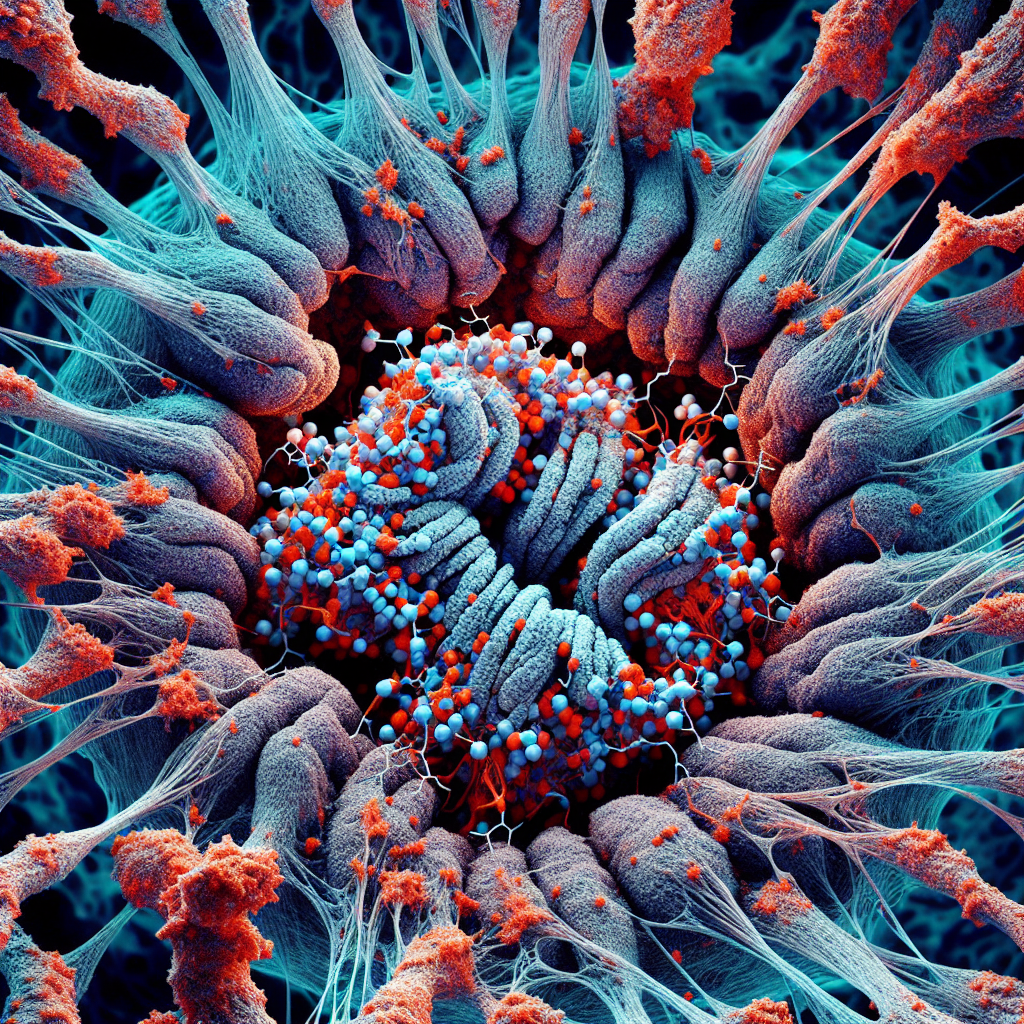Groundbreaking research has unveiled a potential game-changer in the treatment of autoimmune disorders, particularly Myasthenia Gravis (MG). A recent study published in the journal Cell highlights the discovery of an enzyme that could revolutionize the management of immune-related disorders. This breakthrough offers hope for millions suffering from autoimmune diseases and opens new avenues for therapeutic interventions.
Understanding Myasthenia Gravis and IgG-Mediated Pathologies
Myasthenia Gravis is a chronic autoimmune disorder that significantly impacts the quality of life of those affected. In this condition, antibodies interfere with the communication between nerves and muscles, resulting in debilitating muscle weakness. MG is just one example of the broader category of IgG-mediated pathologies, which encompass various autoimmune diseases caused by overactive antibodies.
These disorders occur when the immune system mistakenly attacks the body’s own tissues, leading to a range of symptoms that can be challenging to manage with current treatments. The complexity of these conditions has long puzzled researchers, driving the need for more effective and targeted therapies.
The Discovery of Enzyme CU43: A Potential Breakthrough
At the heart of this groundbreaking research is the discovery of a family of enzymes by scientists at Emory University. Among these, an endoglycosidase named CU43 has shown remarkable potential in reducing IgG-mediated pathologies.
How CU43 Works
The unique mechanism of CU43 lies in its ability to modify antibodies in a way that neutralizes their disease-causing properties. This modification effectively disarms the antibodies, preventing them from attacking the body’s own tissues. This approach represents a paradigm shift in treating autoimmune disorders, as it targets the root cause of the disease rather than just managing symptoms.
Promising Results in Treating Myasthenia Gravis
The study’s findings, based on mouse models, demonstrate the remarkable effectiveness of CU43 in treating Myasthenia Gravis. When compared to current treatment options, CU43 showed:
1. Significantly higher efficacy in reducing symptoms
2. Effectiveness at a much lower dose – approximately 4,000 times less than existing treatments
These results are particularly encouraging as they suggest the potential for more effective treatment with fewer side effects, a common concern with many current autoimmune therapies.
Broader Implications for Autoimmune Diseases
While the study focused primarily on Myasthenia Gravis, the implications of this research extend far beyond a single condition. The enzyme CU43 shows promise in treating a wide range of autoimmune diseases and other IgG-mediated pathologies.
Potential Applications
Some of the conditions that could potentially benefit from this discovery include:
– Rheumatoid Arthritis
– Lupus
– Multiple Sclerosis
– Graves’ Disease
– Pemphigus
The versatility of CU43 in modifying antibodies opens up possibilities for treating various autoimmune conditions that have been challenging to manage with existing therapies.
Expert Insights and Future Directions
The significance of this discovery is underscored by the reactions of leading experts in the field. Dr. Eric Sundberg, the principal investigator of the study, emphasized the enzyme’s ability to modify antibodies in a way that prevents disease progression. This insight highlights the potential for a new class of treatments that could fundamentally change how we approach autoimmune disorders.
Dr. Jeffrey Ravetch, a collaborator and co-author of the study, pointed out the remarkable potency of CU43 compared to current treatments for autoimmune diseases. This potency, combined with its effectiveness at low doses, suggests the possibility of developing treatments with fewer side effects and better patient outcomes.
Moving Towards Clinical Trials
The promising results from this study have set the stage for the next crucial phase: clinical trials in humans. Researchers are optimistic about rapidly moving CU43 into human trials to explore its therapeutic potential further. This step is critical in translating the laboratory findings into real-world treatments that could benefit patients.
Potential Impact on Patient Care
If the results from animal studies translate successfully to humans, the impact on patient care could be profound. Some potential benefits include:
1. More effective symptom management
2. Reduced side effects due to lower dosage requirements
3. Improved quality of life for patients with autoimmune disorders
4. Potential for treating previously challenging cases
The development of CU43 as a therapeutic agent could represent a significant leap forward in the treatment of autoimmune diseases, offering hope to millions of patients worldwide.
Frequently Asked Questions
1. What is Myasthenia Gravis?
Myasthenia Gravis is a chronic autoimmune disorder where antibodies interfere with nerve-muscle communication, causing muscle weakness.
2. How does the enzyme CU43 work?
CU43 modifies antibodies to prevent them from causing disease, effectively neutralizing their harmful effects in autoimmune conditions.
3. Is CU43 effective for all autoimmune diseases?
While the study focused on Myasthenia Gravis, CU43 shows potential for treating various IgG-mediated autoimmune diseases.
4. When might CU43 be available as a treatment?
The next step is human clinical trials. The timeline for availability as a treatment will depend on the success and duration of these trials.
5. Are there any known side effects of CU43?
The full side effect profile in humans is not yet known, as the treatment is still in the research phase. Clinical trials will provide more information on potential side effects.
Conclusion
The discovery of enzyme CU43 marks a significant milestone in the field of autoimmune disease research. Its potential to modify disease-causing antibodies offers a new approach to treating conditions like Myasthenia Gravis and other IgG-mediated pathologies. As research progresses towards clinical trials, there is renewed hope for more effective, targeted treatments with fewer side effects.
This breakthrough not only represents a potential revolution in treating autoimmune disorders but also highlights the importance of continued research in this field. As we look to the future, the development of CU43 and similar enzymes could pave the way for a new era in managing immune-related disorders, improving the lives of millions of patients worldwide.
Source: Medical Xpress
